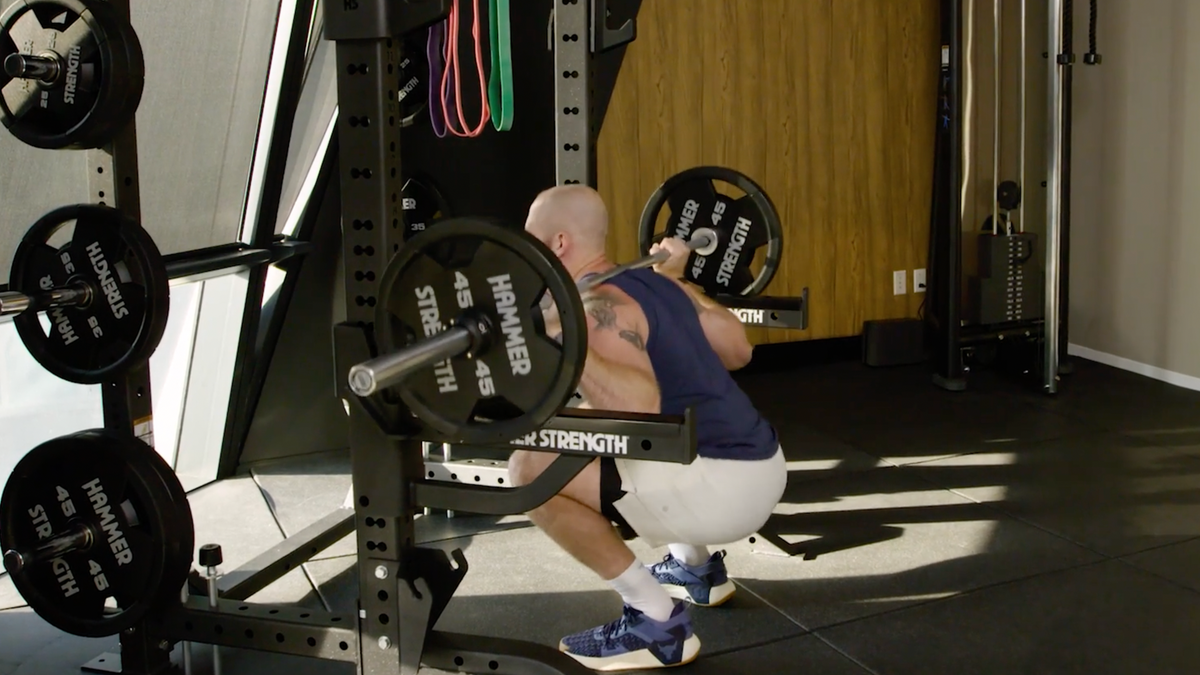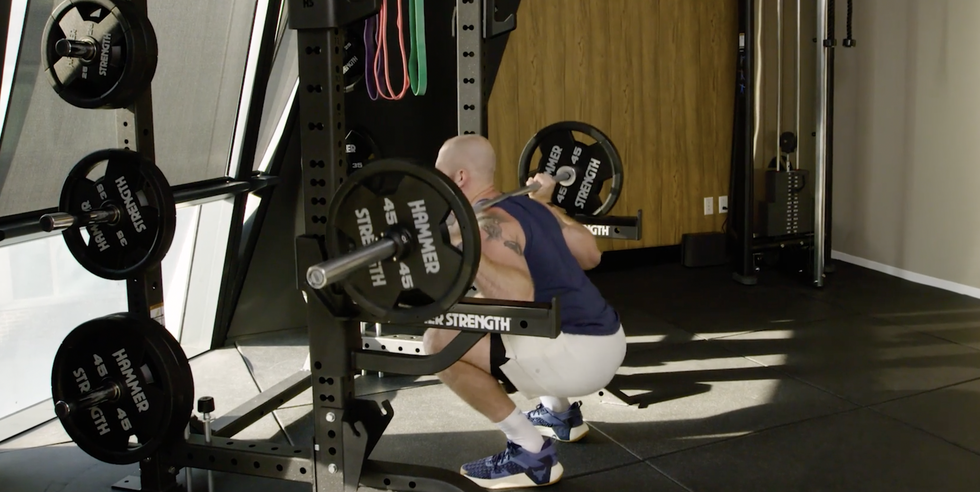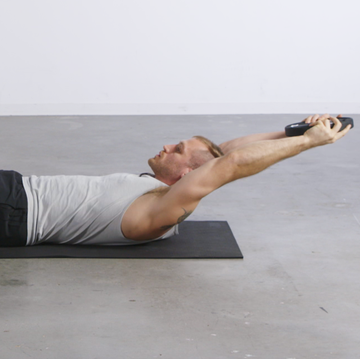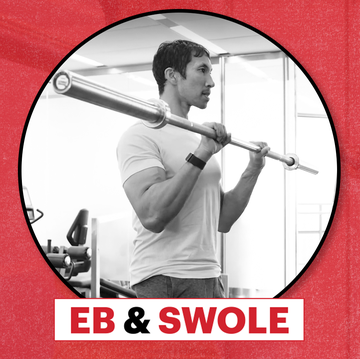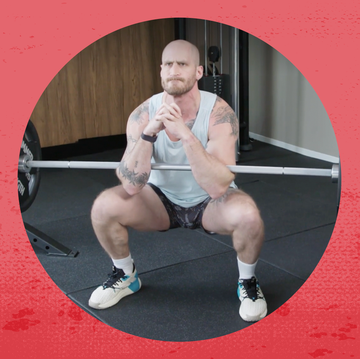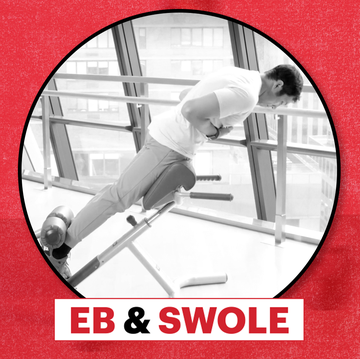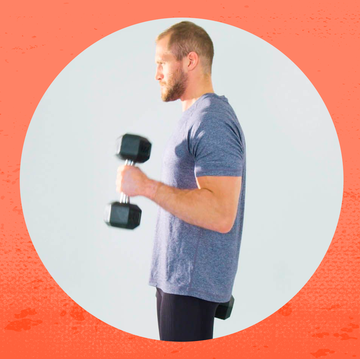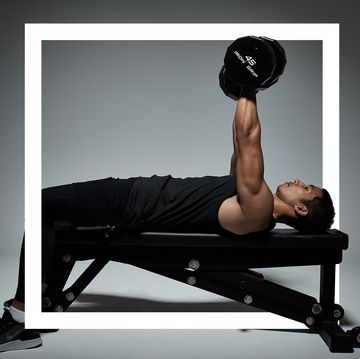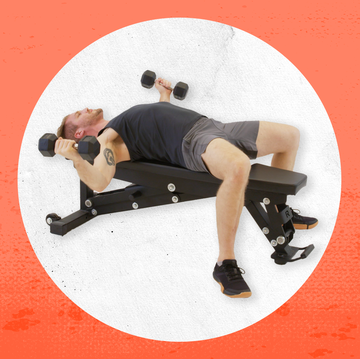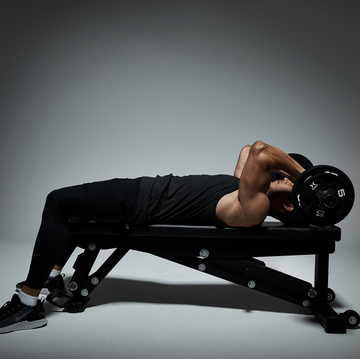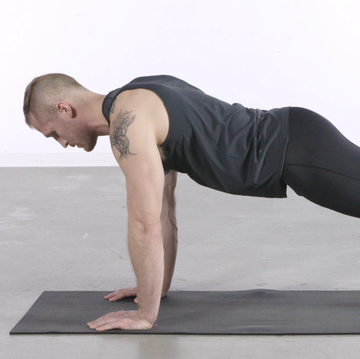THE BARBELL BACK squat is one of the most renowned lifts in the gym. For good reason, too: the exercise challenges some of the biggest muscles in the body, promotes muscle growth, and builds strength.
If building tree trunk legs is chief on your list of goals, the barbell back squat is a great pick to add to your workout routine—so long as you’re doing it correctly. The barbell back squat is an incredibly technical exercise that demands a ton of energy output from the body. If you rush through your reps and neglect form, you’re putting yourself at risk of injury.
Here, Men's Health fitness director Ebenezer Samuel, C.S.C.S., and senior fitness editor Brett Williams, C.P.T., guide through all there is to know about the barbell back squat so you can utilize the movement to its fullest potential.
Benefits of Barbell Back Squat
The barbell back squat has one key benefit that separates it from all the other squat variations—you’re able to really stack up the plates.
“If we put weight on our back, that’s going to let us move our max load,” Samuel says. Muscle growth happens when we challenge our muscle fibers with heavy load. If you’re looking to grow your quads and glutes, the barbell back squat may be an asset to add to your arsenal.
This movement also helps improve athleticism. The squat powers through the knee and hip extension, which is vital to movements like jumping and running. Building strength through these movement patterns will help improve explosiveness and power that you need not only on the field or court, but in everyday life.
Which Muscles Does the Barbell Back Squat Target
The barbell back squat is a compound exercise—meaning it works a few different muscle groups at once by initiating movement at several joints. The quadriceps power the extension of the knees, and the glutes drive the extension of the hips. It’s not only a leg exercise, though. The low back extensors are also put to work, as the torso is put at a little more of an angle than other kinds of squats, in order to put the glutes into a more optimal position.
There’s a bit of a misconception that the barbell back squat also targets the hamstrings and the abs. While the hamstrings are helping stabilize the movement, they’re never actually changing length. The abdominal muscles are also not working as hard as you’d imagine. Yes, they’re helping stabilize too, but ultimately, the rectus abdominis initiates spinal flexion, or the rounding of the back—exactly what we don’t want to be doing when squatting.
How to Do the Barbell Back Squat
Ideally, you’ll want to utilize a power rack, or some other setup with safety catches, when you do a barbell back squat. It allows you to safely and efficiently get into position, as long as it’s set up correctly.
Situate the J-hooks, or the hooks that hold the barbell, so that the bar sits just a bit lower than shoulder height. That way you’re not expending a lot of energy lifting up off the hooks to get into position. You’ll also want to ensure that the safety racks are at a proper height—about one or two notches up from the bottom. Once the rack is set up properly, you’re ready to squat. Here’s how.
How to Do It:
- Dip underneath the bar. Think about creating tension across the shoulder blades as you pull yourself in front of it.
- Place the bar on the meaty portion of your traps—not your neck. Your neck should be able to comfortably stay neutral the whole time. If you feel like you’re craning forward, the bar may be too high.
- Pull the elbows down so that they are almost in line with your torso.
- Push up to get the bar off the hook before stepping back.
- Move the feet so they’re a little wider than shoulder width, with the toes pointed slightly outward.
- Start by pushing the butt back and tilting the torso forward just slightly before you start bending the knees. Take a deep inhale right before you lower. Take your time lowering down—about 2 seconds.
- Open the knees as you lower down. Lower only to the level where you’re able to keep your lower back straight.
- As you push up, raise the torso and hips at the same time. Keep the knees pushed out.
How Deep Should You Squat?
The answer to that will depend on your personal mobility. Aim for bringing your thighs parallel with the ground. If you have good mobility in your knees, hips, and ankles, you may be able to drop even deeper.
The main point to remember is to not allow your low back to round—if it does, you're going deeper than your mobility allows, which could set you up for injury. Don't push through discomfort here. Instead, work with lighter weight until you can build strength and improve your mobility to hit depth.
How to Add the Barbell Back Squat to Your Workouts
The barbell back squat demands a lot of energy. Because of that, you want to incorporate it as one of your main lifts early in your workout. Because of the energy demand, limit programming it to once or twice a week, tops. Aim for 3 to 4 sets of anywhere from 3 to 10 reps, depending on how heavy you’re loading.
